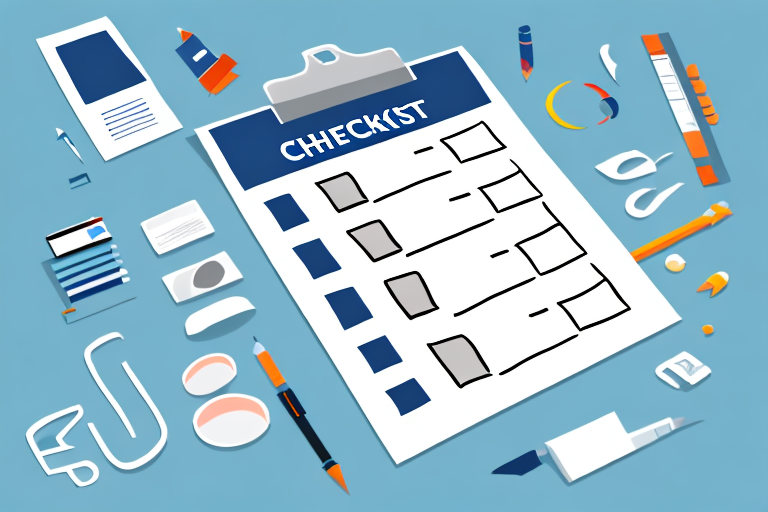In today’s global economy, international trade is an essential aspect of many businesses. However, engaging in exports comes with a set of obligations and responsibilities. Adhering to export compliance regulations is crucial to avoid legal issues, financial penalties, and reputational damage. To help businesses navigate this complex landscape, an export compliance checklist is a valuable tool.
Understanding Export Compliance Regulations
Export compliance regulations are legal requirements that govern the exportation of goods and services from one country to another. These regulations are put in place to protect national security, ensure fair trade practices, and prevent the unauthorized transfer of sensitive technologies and data. Understanding the intricacies of export compliance is fundamental to operating a business in the global marketplace.
One key aspect of export compliance regulations is the classification of goods and technologies. Different countries have different classification systems, and it is important for businesses to accurately classify their products to ensure compliance. This involves determining the Export Control Classification Number (ECCN) or Harmonized System (HS) code for each item, which determines the level of control and licensing requirements.
Another important consideration in export compliance is the screening of parties involved in the export transaction. This includes conducting due diligence on customers, suppliers, and other business partners to ensure they are not on any restricted or denied party lists. These lists are maintained by various government agencies and include individuals, organizations, and countries that are subject to export restrictions due to national security concerns or other reasons.
The Importance of Export Compliance
Complying with export regulations is not only a legal obligation but also a strategic advantage. A comprehensive export compliance program minimizes the risk of violations, reduces the likelihood of disruptions in supply chains, and maintains the integrity of business operations. Additionally, adhering to export compliance demonstrates a commitment to ethical conduct and responsible business practices, which can enhance a company’s reputation and build trust with stakeholders.
Furthermore, export compliance helps businesses navigate the complexities of international trade. By understanding and following export regulations, companies can avoid costly penalties, fines, and legal consequences. It also ensures that products are exported to the correct destinations and end-users, preventing unauthorized use or diversion of sensitive technologies or goods.
Key Components of an Export Compliance Program
A robust export compliance program encompasses various elements to ensure comprehensive adherence to regulations. These components include:
1. Risk assessment: Conducting a thorough evaluation of potential hazards and vulnerabilities in export operations enables businesses to proactively address compliance issues.
2. Restricted or prohibited items: Identify and understand goods and technologies that are subject to export controls, ensuring compliance with specific regulations that apply.
3. Export controls and licensing requirements: Familiarize yourself with the specific controls and licensing procedures relevant to the countries and industries your business operates in.
4. Classification and documentation: Properly classify goods and maintain accurate and complete export documentation, including packing lists, commercial invoices, and export licenses.
5. Record-keeping: Establish and maintain a system for organized record-keeping, documenting all export transactions, licenses, and authorizations.
6. Internal policies and procedures: Develop comprehensive policies and procedures that clearly articulate export compliance requirements and protocols.
7. Training and education: Provide employees with regular training and education programs to ensure a deep understanding of export compliance regulations and their implications.
8. Technology solutions: Implement technology solutions such as compliance management software to automate and streamline export compliance processes.
9. Due diligence: Perform due diligence on business partners and customers to ensure they are not on any restricted or denied party lists.
10. End-user and end-use restrictions: Manage and monitor compliance with end-user and end-use restrictions to ensure exported goods are used as intended.
11. Packaging, shipping, and documentation: Ensure proper packaging, shipping methods, and accurate documentation to comply with export regulations.
12. Denied parties and restricted destinations: Screen all parties involved in export transactions against denied party lists and comply with restrictions on shipments to certain destinations.
13. Auditing and monitoring: Regularly conduct internal audits and implement ongoing monitoring processes to identify and rectify any compliance violations.
14. Reporting and correcting non-compliance: Establish procedures for reporting and addressing instances of non-compliance promptly.
15. Best practices: Stay up to date with changes in international trade regulations and adopt best practices that align with evolving compliance standards.
16. Compliance training for third-party vendors: Extend your export compliance program to include training and education for third-party vendors who are involved in your export operations. Ensure that they understand and adhere to the same compliance requirements and protocols as your internal employees.
Keeping Up with Changes in International Trade Regulations
International trade regulations are subject to change, often influenced by geopolitical and economic factors. It is essential for businesses to stay current with these developments to ensure ongoing compliance. This can be achieved by actively monitoring updates from government agencies, participating in industry associations, and engaging with legal experts who specialize in international trade law.
In conclusion, developing and implementing an export compliance program is a critical step for businesses engaged in international trade. By following a comprehensive export compliance checklist, businesses can mitigate risks, establish a reputation for integrity, and maintain compliance with evolving international trade regulations.
Staying informed about changes in international trade regulations is crucial for businesses to adapt and thrive in the global marketplace. By keeping a close eye on geopolitical and economic factors that influence these regulations, businesses can anticipate potential changes and proactively adjust their strategies. Additionally, staying connected with industry associations and attending trade conferences can provide valuable insights and networking opportunities to stay ahead of the curve. It is also important to regularly review and update internal policies and procedures to ensure ongoing compliance with evolving international trade regulations.







